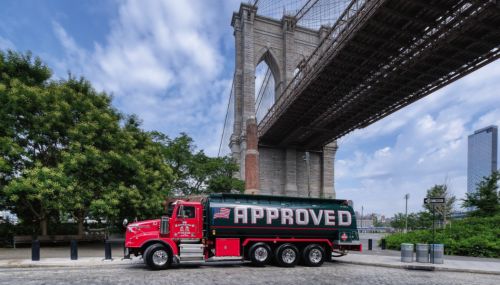Extra component eliminates short cycling and reduces wear and tear
During the last decade we have witnessed the phenomenal growth of modulating-condensing boiler installations, primarily as retrofits into existing systems.
The first few years of mod-con were littered with poor installations because of the trade industries’ lack of education on primary/secondary piping. High-pressure-drop heat exchangers were not matched to the proper circulator selection, causing a tremendous amount of short cycling.
Manufacturer’s glossy fliers had consumer’s expectations at an all-time high: 95 percent efficiency, quiet operation and installation flexibility. And we have since learned that these systems are needy, requiring annual maintenance on both the fire side and the water side of the heat exchanger. We have also learned what happens when you undersize the circulator and/or oversize the boiler.
The Facts of the Matter
When sizing and selecting mod-con boilers we, as heating professionals, size the equipment based on the BTU/hour load of the home. Most homes in the New England area have a heat loss of around 25-35 BTU/hour per square foot.
When sizing the boilers we noticed that the domestic hot water (DHW) load was consistently higher than the heating load. Most mod-cons have a reset controller built in to vary the supply temperature based on what is happening outdoors. The colder it is outdoors, the warmer the water in the boiler; the warmer it is outdoors, the cooler the water in the boiler. Boilers also have thermistors on the supply and return, which alter the firing rate of the boiler based on the load, i.e. the boiler control will increase or decrease the firing rate based on the difference between the supply and return temperatures.
Today, most mod-con boilers have a turndown ratio of at least 5:1, however when you size for DHW you’ll find more often than not that your boiler size may be in the 120,000 to 150,000 BTU/hour range.
The DHW Conundrum
When sizing the boiler for, say, a 2,500-square-foot home with a heat loss of 75,000 BTU/hour, we find that the DHW load (as much as 150,000 BTU/hour) is significantly higher than the heating load. Unlike tankless type water heaters, this shortfall in BTUs can be overcome with the addition of an indirect water heater. But the boiler is still oversized for the heating requirements.
To further complicate matters, many of today’s larger homes will have a combination of heat emitters that require different temperatures. It is not uncommon for a 2,500-square-foot house to have as many as five or six zones with varying temperature requirements: high temperature for the DHW; moderately high for the baseboard and/or air handlers; moderately low for the staple-up radiant; and low for in-slab radiant. To better understand these challenges, let’s take a look at one of these zones.
500-square-foot zone heated with 25 feet of baseboard with a rated output of 600 BTU/hour @ 180°F per linear foot.
Assuming that the heat loss for this zone requires 30 BTU/hour per square foot on the coldest day, the calculation is simple:
500 square feet x 30 BTUs = 15,000 BTU/hour. This represents the total required BTU/hour for this zone.
So what effect will outdoor reset have on these numbers?
Short Cycling
When the temperature of the water drops to 150°F at an outside temperature of 35°F, the baseboard will now deliver just 400 BTU/hour per foot instead of 600 BTU/hour per the manufacturer’s ratings. The mod-con, which was sized for the DHW load, has a 150,000 BTU/hour capacity with a 5:1 turn down ratio, is now firing at 30,000 BTU/hour to satisfy a load of just 10,000 BTU/hour. Can you say short-cycle?
What does short cycling do to these low mass condensing units? The two worst times in the combustion cycle are startup and shutdown. This is when the flue gas is at its dirtiest. You will burn more gas; you will create wear and tear on all components; you will shorten the life expectancy of the heat exchanger and yes, your customer will not be happy, because you recommended the more expensive, super efficient boiler that was supposed to save them money! So what can be done?
The Buffer Zone
A simple way to overcome the short cycling is to add a buffer tank; a four-port, well insulated vessel designed to act as a BTU reservoir. The buffer tank is installed between the boiler and the system, much like a hydraulic separator (see illustration above). Think of it as a hydraulic separator on steroids. This also has the added benefit of eliminating the need for primary/secondary piping.
Sizing is important and easy, if you use this simple formula:
Lowest Firing Rate – Lowest Load x Run Time ÷ 10,000 (ΔT x 500).
Or in our case: 30,000 BTU/hour – 10,000 BTU/hour x 10 minutes ÷ 10,000 = 20 gallons. So, by installing a 20-gallon (or next nearest size) buffer tank, you get the following benefits:
- Elimination of short cycling;
- Easy piping for mixed temperatures, as primary/secondary is no longer needed;
- Prevention of wear and tear of your boiler components;
- Hydraulic separator for better mixing;
- ½°F loss per hour of your heated water;
- Increased water content for heating loads;
- Ability to micro-zone.
Don’t Forget To Buffer
There is no doubting the increased efficiencies that can be achieved through the condensation of combustion flue gases, and boiler manufacturers have added many features over the years to “de-mystify” their products, making it easier for us to install them. But the fact remains that many of those boilers are operating outside of their design parameters. While insufficient radiation is a common issue, the negative effects of short cycling can be greatly reduced with the addition of a buffer tank.





